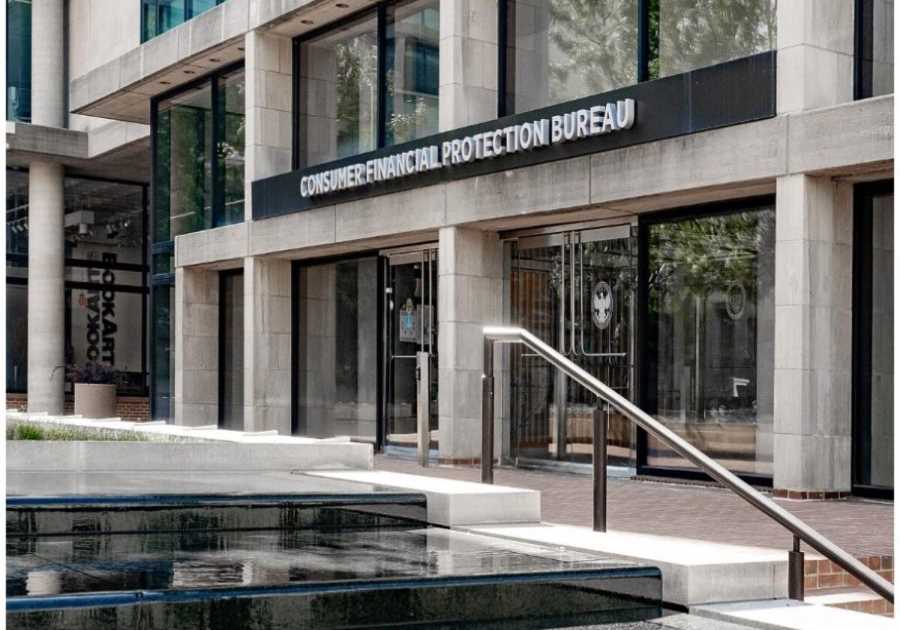
Pennsylvania is known for its industrial roots, dynamic cities, and varied landscapes ranging from Lake Erie, to the Appalachian Mountains, to historic rivers that weave throughout the state. The climate is generally humid and moderately wet, usually seeing plenty of rain and snow.
No matter where you live in Pennsylvania, though, you are at risk of natural disasters, such as flooding, hurricanes, and winter storms. When these happen, it’s essential to be prepared.
So what are the most common natural disasters in Pennsylvania, how are they changing, and what can you do to prepare? Whether you’re planning a move to Philadelphia or are looking at apartments in Pittsburgh, read on for everything you need to know.
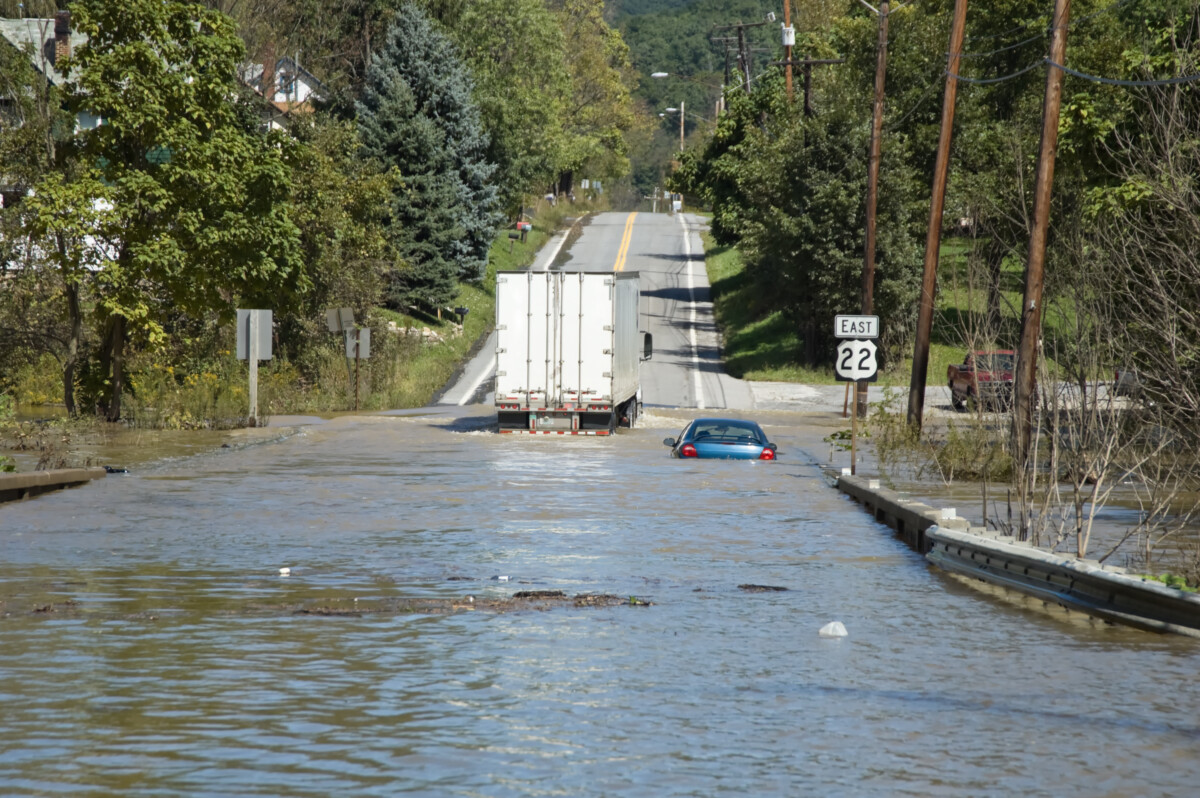
Pennsylvania flooding
Pennsylvania cities most at risk of flooding
- Lock Haven: 35% of properties at risk
- Williamsport: 29% of properties at risk
- Bloomsburg: 24% of properties at risk
Flooding is the most common and damaging natural disaster in Pennsylvania. In fact, Pennsylvania trails only Florida when factoring in potential structural damage from flooding. The areas most at risk of flooding are in central Pennsylvania near rivers, with the highest risk along the Susquehanna and Schuylkill Rivers. However, potential costs from flood damage will be the highest in Philadelphia.
Recently, in September 2021, the remnants from Hurricane Ida caused dramatic flooding throughout Pennsylvania, flooding entire highways and causing the Schuylkill River to crest just below its 17-foot record. Most flooding events come from tropical storms and hurricanes, with the largest amounts of rain in state history coming from Hurricane Agnes in 1972 and Tropical Storm Lee in 2011. Both storms produced massive flooding.
Many are calling for longer-term solutions statewide, but have had little success so far.
How to prepare for flooding in Pennsylvania
In Pennsylvania, preparing for a flood is essential, especially along the state’s many rivers. Here are a few tips to help:
- Subscribe to AlertPA to receive critical information and emergency alerts before, during, and after natural disasters and severe weather.
- Familiarize yourself with national and statewide flood risk maps to see your potential risks.
- Understand your local flood and tsunami evacuation routes.
- Purchase flood insurance if you’re in a high-risk zone and can afford it. Flood insurance is legally required if your home has a high risk.
- Invest in flood sensors.
- Elevate valuable items in flood-prone areas of your home, and install sandbags or barriers if necessary.
- Stay tuned to weather forecasts and alerts, and have a communication plan in place with your family.
- During and after heavy rainfall, be on the lookout for landslides, mudslides, and debris.
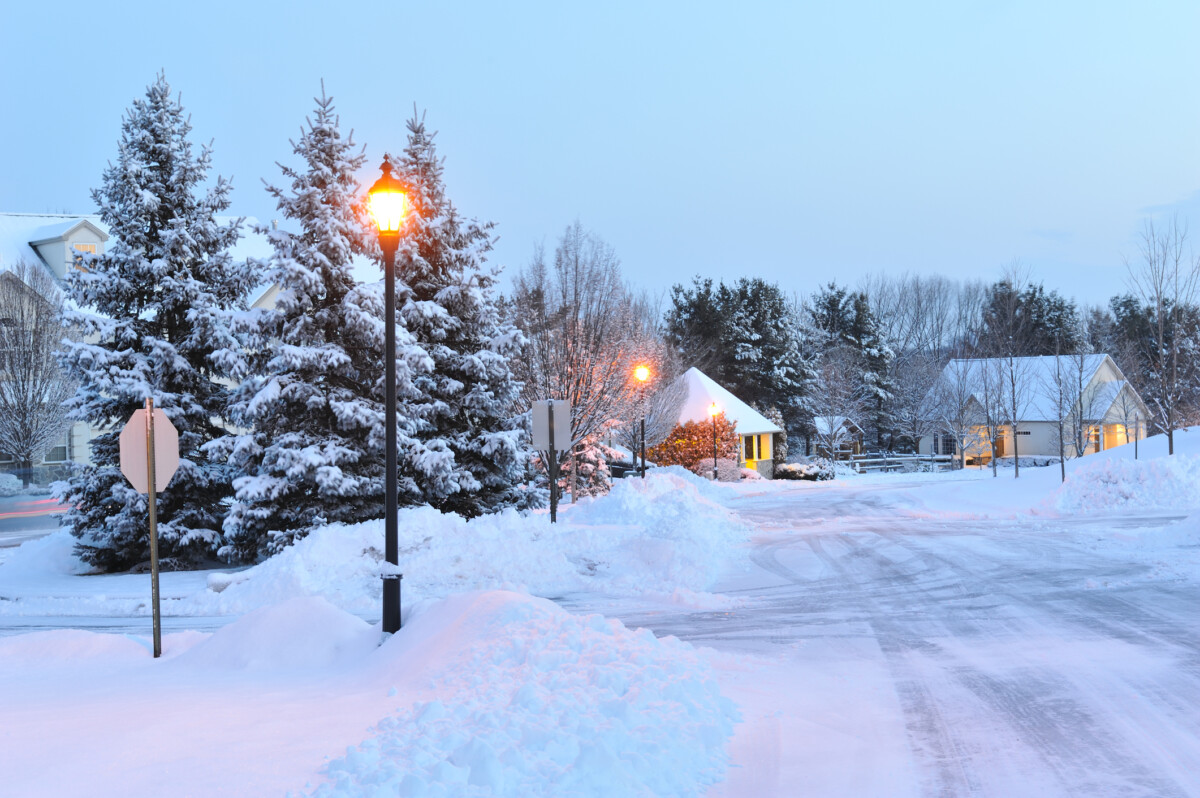
Pennsylvania winter storms
Pennsylvania is no stranger to heavy snow and bitter cold. In fact, Erie, PA is one of the snowiest cities in the U.S.
Two types of winter storms are most common in Pennsylvania: Nor’easters, and lake effect snowstorms. Nor’easters generally hit the entire state, while lake effect storms impact areas to the east and south of Lake Erie. Let’s dig a bit deeper into these two.
Nor’easters are fairly common in Pennsylvania and typically form during the winter and spring as a result of bitter arctic wind crossing over the warmer Atlantic Ocean. Nor’easters are a regular occurrence in the Northeastern Atlantic, but can become very dangerous. For example, the deadly 1993 “Storm of the Century” was a massive nor’easter that affected nearly the entire east coast.
Lake effect storms, on the other hand, can produce extremely heavy snowfall, but usually in narrow bands that affect regions on the eastern shores of the Great Lakes. This phenomenon helps make cities like Erie exceptionally snowy. Lake effect snow can be dangerous and sometimes results in thundersnow, producing blizzard conditions for dozens of hours at a time.
How to prepare for winter storms in Pennsylvania
Preparing for severe winter weather is essential in Pennsylvania, especially to the east of Lake Erie and upstate. This helps ensure your safety and minimizes impact on your home and family. Here are a few tips to help you prepare for winter:
- Winterize your home by inspecting your roof, clearing gutters, cleaning your chimney, insulating your attic, checking your heating system, and insulating your pipes.
- If winter weather includes an ice storm, take extra precautions, such as using snow-melting salt or pellets on your walkways and driveway, clearing your gutters, covering pipes, and trimming trees to prevent them from falling.
- Stock up on rock salt, sand, and snow shovels.
- Update your emergency kit to include extra warmth.
- Keep a supply of firewood or alternative heating sources in case the power goes out.
- Charge or refuel your vehicle, and equip it with chains, extra blankets, a shovel, and emergency supplies.
- Prepare alternate travel routes, as storms often cause road closures.
- Stay updated on weather forecasts and make sure you have a reliable method of communication.

Pennsylvania hurricanes and thunderstorms
Pennsylvania cities most at risk of dangerous storms
- Philadelphia: 100% of properties at risk
- Montgomery County: 69% of properties at risk
- Lancaster: 3% of properties at risk
Hurricanes and tropical storms are fairly rare in Pennsylvania, especially when compared to southern states like Florida and Texas. However, when they do hit, they affect millions of people and can cause widespread damage. Pennsylvania hurricanes come from the Atlantic Ocean, but generally only impact the state from late August through October. Philadelphia is most at risk from major storms due to its location near the coast.
In Pennsylvania, hurricanes often bring severe flooding from rainfall, which can overwhelm rivers and storm drains. The most recent hurricane to hit the state was the remnants from Hurricane Ida, which caused massive flooding throughout the state.
Additionally, unique to the Central and Eastern U.S. are Derechos, which can happen year-round but are most common from May through August. Derechos are a band of strong, long-lasting thunderstorms that can produce winds similar to a weak tornado across hundreds of miles. The most recent significant Derechos to hit Pennsylvania came in June 2020, which gained extra strength from Lake Erie and heavily impacted most of the state.
Hurricanes and tropical storms can sometimes cause tornadoes as well. For example, Hurricane Ida caused at least seven tornadoes to form in the Philadelphia region.
How to prepare for hurricanes and thunderstorms in Pennsylvania
Pennsylvania is at risk of hurricanes and severe storms, so it’s essential to be prepared. Here are a few tips to help:
- Stay updated on forecasts and follow all official evacuation orders.
- Familiarize yourself with your city’s evacuation map. Every city is required to create and provide one.
- Create a waterproof emergency kit, which should include water, nonperishable food, a can opener, medications, first aid supplies, important documents, and more.
- Keep a charged, durable communication device on hand.
- Strengthen your home from winds by decluttering drains and gutters, bringing in outside furniture, and trimming trees.
- Secure your doors and board windows, or install hurricane shutters. You can also hire a contractor to help prepare your home.
- Purchase flood insurance or update your policy.
- Raise your home to protect it from storm surges and flood damage.
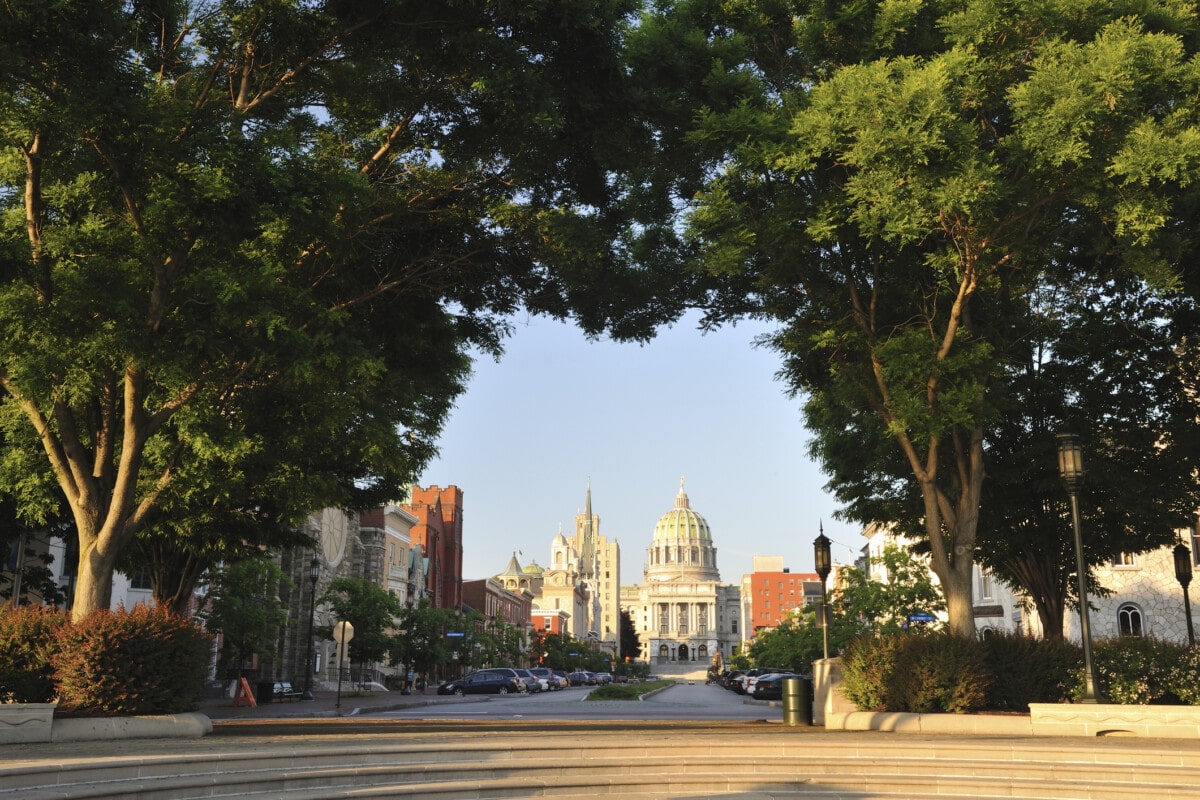
Pennsylvania heat waves
Pennsylvania cities most at risk of heat waves
- Philadelphia: 100% of properties at risk
- Lancaster: 97% of properties at risk
- Gettysburg: 85% of properties at risk
Heat waves aren’t something people generally associate with the Northeast. However, Pennsylvania does experience heat waves that can be strong and long-lasting. Recently, in July 2023, a heat wave that spread across the entire Northeast brought heat indexes to well over 100 degrees Fahrenheit in large cities like Philadelphia, where many residents don’t have air conditioning. The total number of homes in Pennsylvania without A.C. is over 400,000.
The average temperature in Pennsylvania has risen about 1.8 degrees Fahrenheit in the past 100 years, and is expected to rise another 5.9 degrees by 2050. Research shows that along with higher average temperatures, heat waves will increase in duration and severity. The urban heat island effect can make this unbearable in many areas, especially lower income neighborhoods that lack access to green space.
Lastly, two counties (Lancaster and Chester) in Pennsylvania are expected to experience at least 0.5 days with a heat index above 125 degrees by 2053.
How to prepare for heat waves in Pennsylvania
Heat risk in Pennsylvania can be intense during heat waves, primarily in the summer and early fall, and when paired with high humidity. Here are a few ways to stay cool in extreme heat:
- Stay updated on forecasts and advisories to prepare for a heatwave.
- Close blinds, shades, and curtains.
- Install temporary window reflectors between windows and drapes.
- Purchase air conditioning if you can, or get to a location that does.
- Prepare a meal plan that doesn’t involve cooking indoors.
- Install a generator in case the power goes out due to strained utility systems.
- Stay hydrated before, during, and after a heat event, especially if there is high humidity.
- Limit outdoor activities to the early morning and late evening.
- If your home is above 95 degrees and you don’t have AC, don’t use a fan to cool yourself down.
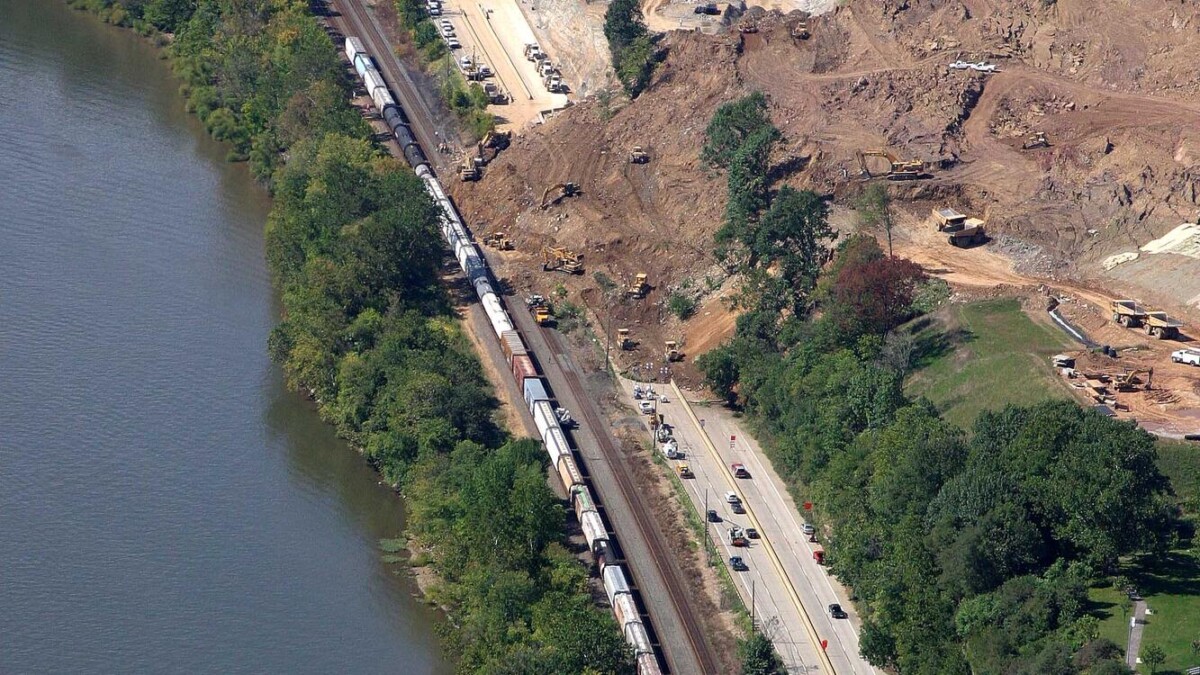
Pennsylvania landslides
Landslides are a moderate risk in Pennsylvania. Most landslides occur in Southwestern Pennsylvania around the Allegheny and Appalachian Mountains, while more localized sliding happens elsewhere, especially in cities like Pittsburgh. Luckily, as opposed to more mountainous states, landslides in Pennsylvania are generally slower-moving and damage property and infrastructure rather than people. Most landslides in PA are caused by excessive rain.
Large landslides have occurred in recent history, such as the Kilbuck landslide, along with numerous slides along highways in the past few years.
How to prepare for landslides and mudslides in Pennsylvania
The most important part of preparing for a landslide is thinking ahead and familiarizing yourself with the landscape. Importantly, don’t build a home or structure near steep slopes, close to mountain edges, or along natural erosion valleys and rivers. Here are some additional tips to help:
- Review areas at risk using the Washington State interactive hazards map.
- Check if your property has been affected by landslides in the past, as these areas are most at risk.
- Consult a professional for retrofitting, such as flexible pipe fittings.
- Plant ground cover on slopes, and build retaining walls around your property.
- Build channels or deflection walls to direct mudflow around your home. However, if you direct debris into a neighbor’s property, you may be liable for damages.
- Consider purchasing landslide insurance, as standard homeowners insurance policies generally don’t cover damage from landslides or mudslides.
- Remain alert during periods of heavy rain, especially if you live on a hillside.
- Recognize warning signs, such as new or widening cracks in your home’s structure, bulging ground, or unusual sounds.
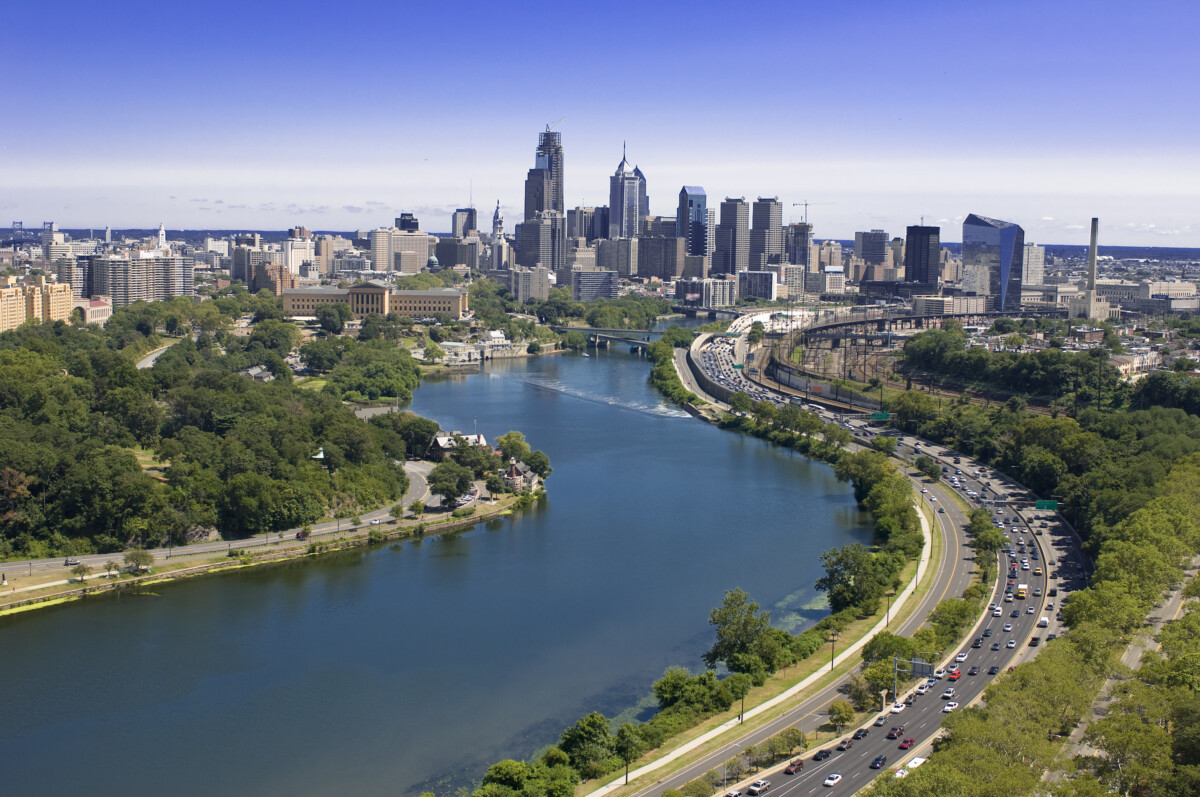
Final thoughts on natural disasters in Pennsylvania
Pennsylvania is a diverse state that sees rain, sun, lake-effect snow, nor’easters, and everything in between. As such, it’s also prone to numerous natural disasters, such as flooding, heat waves, winter storms, and more.
If you’re considering moving to Pennsylvania or already call The Keystone State home, it’s essential to prepare for natural disasters. Understanding your risks and adequately preparing are helpful to make the most out of living in Pennsylvania. NOAA and FEMA offer maps that show forecasted and possible risks in any given area, which can help you prepare.
Lastly, many natural disasters are worsened by climate change. So no matter how you prepare, reducing your carbon footprint and fighting for systemic change are the best long-term solutions.
“At risk” means a property has a major or greater probability of being affected by a certain risk in the next 30 years. State and metro data is courtesy of First Street Foundation.
This article is for informational purposes only. Individual results may vary. This is not intended as a substitute for the services of a licensed and bonded home services or disaster prevention professional. Always seek expert advice and follow all official guidance before, during, and after a disaster.
The post Natural Disasters in Pennsylvania: What Homeowners and Renters Need to Know appeared first on Redfin | Real Estate Tips for Home Buying, Selling & More.
------------Read More
By: Jamie Forbes
Title: Natural Disasters in Pennsylvania: What Homeowners and Renters Need to Know
Sourced From: www.redfin.com/blog/natural-disasters-in-pennsylvania/
Published Date: Wed, 08 Nov 2023 23:27:55 +0000
Did you miss our previous article...
https://trendinginbusiness.business/real-estate/this-ohio-midcentury-had-charmsthey-just-needed-to-be-turned-on
.png)





